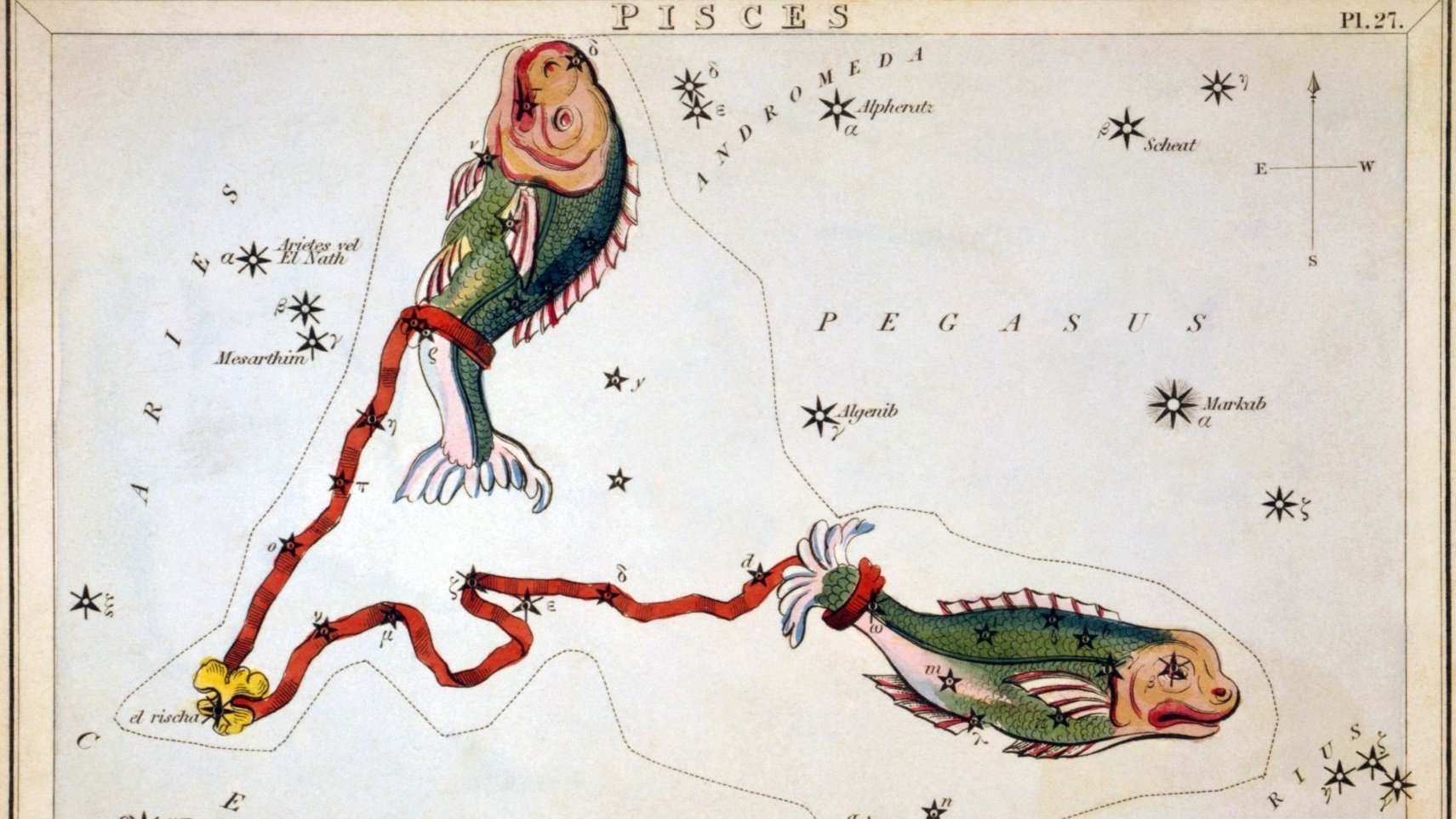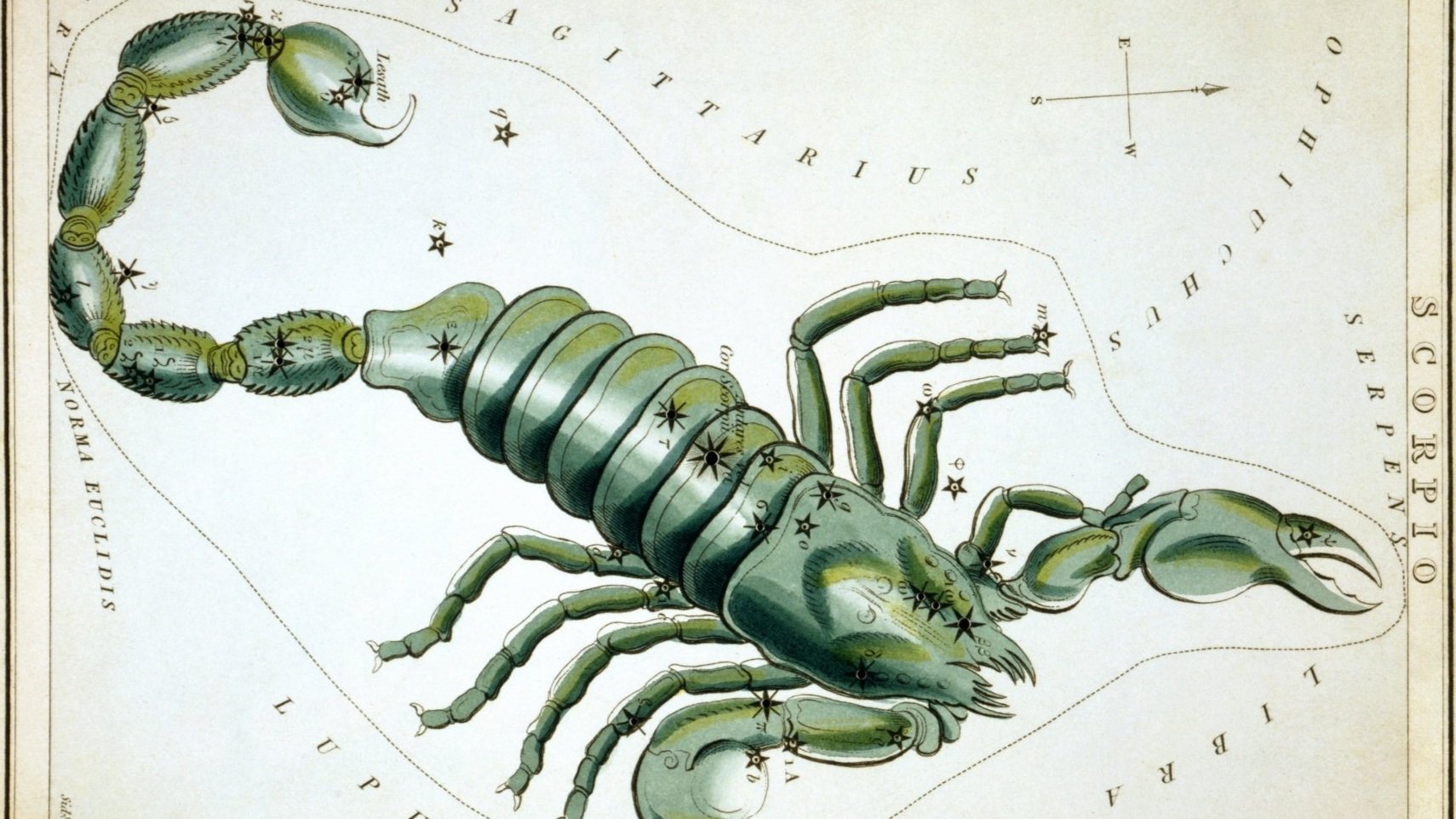Aries: independence + integration
The meaning of Aries is independence and integration, assertion of will, ambition, leadership, and pioneering or initiating action. Aries is called to go first, to bleed first for the cause, to start sh*t. Without a leader, or at least someone willing to go first, we are stagnant and stuck in chaos waiting for a beginning. The bravery, independence, and audacity of this archetype teaches us the value of the individual in service to the collective.
We begin the zodiacal cycle with the Sun transiting across the constellation of Aries. This marks the zodiacal new year, the beginning of Spring in the northern hemisphere, and the Spring equinox. It is a time of renewal, of life returning to a sleeping environment.
The words of Aries are “I AM.” This archetype speaks to individuality while encapsulating the oneness of the collective. At first glance Aries may appear selfish or self-interested but in it’s most empowered expression, the individuality is wholly integrated into the collective One. The baby of the zodiac is much like human baby who may present like a tiny tyrant but who have not yet developed a distinction between themselves and others. Their demands are not tyrannical, but an assertion of willful desire for collective needs to be met. Like the Warrior who may be seen as bold, brash, and ego driven, empowered Aries offers these qualities to the collective with the wisdom and purpose of selfless devotion to the common good.
The lessons of Aries are of independence and integration, assertion of will, ambition, leadership, and pioneering or initiating action. Aries is called to go first, to bleed first for the cause, to start sh*t. Without a leader, or at least someone willing to go first, we are stagnant and stuck in chaos without a beginning or an end. The bravery, independence, and audacity of this archetype teaches us the value of the individual in service to the collective.
While independence is one side of the spectrum navigated by the archetype of Aries, the other is integration. As shown in the etymology of the word, integration embodies oneness, wholeness, completeness. Empowered independence is not about isolation or detachment from the collective, it is the embodiment of leadership that is conscious of and devoted to the community it leads. Integration is not the loss of individuality to the group, but the awareness of unity and wholeness in the self.
Selfishness is the art of Aries. To articulate need and desire, is what this archetype teaches us. While we cannot guarantee receipt of our needs and desires, we are nearly promised never to receive them without asking. We may risk disappointment or the vulnerability of exposing our will, but this act of vulnerability is the price we pay for a chance to have our needs and desires met.
In American culture, independence is a highly glorified quality. From a therapeutic perspective however, this privileging of independence can present some concerning issues. While it is often Libra, the opposite sign from Aries, that is associated with codependency, the other side of the codependent coin is hyper-independence. This is the deluded belief that an individual can ‘do it all alone.’ The behavior that insists on never sharing it’s needs for fear of exposing the need to receive support or worse, asking and being rejected. Not only does absolutely nothing occur in a vacuum on our planet, but humans are a pack animal, communally oriented and requiring of family, a village, to achieve anything.
While leadership is an honorable quality, it is nothing without a community to lead. The same is true for the archetype of Aries; independence is noble but without a sense of integration, connection to the collective, it is isolated and adrift without purpose.
Pisces: connection + boundaries
The meaning of Pisces combines the mutable mode of adaptation and responsiveness with the sensitive and emotive properties of water. Pisces navigates the spectrum of boundaries, moving from boundlessness that leaves us with nothing to connect to and boundaries that create healthy and sustainable connection. It describes how vulnerable we become to losing ourselves to substances, experiences, and relationships without boundaries. On the other hand, it represents the boundaries that endorse healthy connection and inspire a love solid enough to hold onto.
Pisces is the zodiac symbolized by two fish swimming in opposite directions. This image reminds us that two things can be true at once, drawing on the mysticism and the vast unknown associated with Pisces.
Pisces navigates the spectrum of boundaries, moving from boundlessness that leaves us with nothing to connect to and boundaries that create healthy and sustainable connection. It describes how vulnerable we become to losing ourselves to substances, experiences, and relationships without boundaries. On the other hand it represents the boundaries that endorse healthy connection and inspire a love solid enough to hold onto.
It is the mutable, meaning flexible and changeable, water sign and the last archetype in the zodiac marking the death and rebirth of cycles. In many traditions and certainly Tropical Astrology, water signifies emotional and intuitive powers. Combine the mutable mode of adaptation and responsiveness with the sensitive and emotive properties of water and we have the highly intuitive, creative escape artist that is the sign of Pisces.
Pisces is poetry, the lyrical reality, the liminal space where dreams materialize and riddles are the best questions to ask. This archetype is as much blessed as it is cursed by porosity, a lack of boundaries that leave this narrative plenty of opportunities for martyrdom and sacrifice. Perhaps the most ‘spiritual’ of the signs, Pisces offers lessons in allegory and symbolism. It is best described in metaphor if we hope to capture the mythical siren that is Pisces.
The nature of Pisces is mystical, dreamy, and highly changeable which can lead us down tangential paths when trying to capture the meaning of this elusive archetype. I often find myself struggling to put the Piscean archetype into words, instead becoming distracted or losing my train of thought as the phantasm of this archetype blurs definitions. Pisces is associated with illusion and delusion and often teaches lessons of faith by demonstrating what is not real and what cannot be proven, requiring us to discern for ourselves the meaning and pathway that inspires us.
The ancient ruler of the sign of Pisces was Jupiter. This affinity describes the faith-based lessons of Pisces through the expansion and ascendance articulated by Jupiter. In 1846 the planet Neptune was discovered and then identified as the ruler of this aquatic sign. This era was marked by a number of archetypally relevant discoveries including significant developments in pharmaceuticals and photography. Both pharmaceuticals and photography are fraught with complex layers of illusion and delusion. Both fields hold mysterious narratives such as ghosts captured on film during the early days of photography that were actually the photographer passing through the image while the very low sensitivity of the film required the subject to stand still for a while to allow the image to develop on film. This would create a blurry image of the “ghost” while the subjects believed they had been visited by a deceased ancestor while holding very still for the portrait. The use of photography in court can also offer some concerns for deception as so much faith is put in what we see when in reality, much can be manipulated or mutated to create an illusion our eyes can easily believe. Meanwhile, pharmaceuticals and the industry that has manipulated and contorted the art of pharmacology and herbalism has created a complex narrative of illusion in response to diagnoses of delusions. Pharmaceutical treatment of mental health produced innumerable opportunities for distortions of reality which mirrors the fantastical and hallucinogenic properties of Pisces seamlessly. Corresponding with the chemical sensitivity, the emotional manipulation, and the discrepancies in perception of reality the Pisces archetype and natives navigate narratives of addiction, escapism, and the vast subconscious.
The connection between Pisces and mental health goes deeper than pharmacology as it reflects the unseen, the emotional, and the subconscious areas that are explored and ideally integrated in mental health practices. The porosity of this archetype makes lessons of boundaries a key theme in the Pisces narrative. Whether they are boundaries of abstinence or discernment, limited access to resources or relational, boundaries are the balm to the sacrificial nature of Pisces.
Sandro Botticelli, The Birth of Venus (c. 1484–1486)
The planet Venus is exalted in Pisces, an alignment best articulated by the enlightenment of compassion, the highest form of love. The love Venus brings to a Piscean landscape has the opportunity to spread with the boundlessness of the kind of love we associate with spiritual leaders like the Buddha, Jesus, and Mohammed. It is the ideal love, without restriction or regulation. It is the fantastical love of fairy tales and our wildest dreams. The sensitive and flexible environment that is Pisces, provides the perfect context for the subconscious to come to the surface and intuition to be explored. This same context can induce the urge to escape and dissociate. Where feelings are expressed with vulnerability and fantasy can be articulated without shame, that is where love thrives, where Venus flourishes.
Venus’s exaltation in Pisces also ties together the connection to Neptune. The Greek counterpart to Venus, [the origin of Roman Venus appears to be missing] Aphrodite, was born of the sea, Neptune’s domain.
Capricorn: Use and Conservation
The archetype of Capricorn exists on a spectrum of use and conservation. It speaks to the governance of resource and intentional management of time, space, and goods. The archetypal opposites that depict the spectrum of Capricorn, the modern capitalist banker, willing to cultivate capital wealth based on a precarious and unsustainable value system at the expense of the environment and future generations on the one hand; and the purposeful indigenous ancestors who planted seeds generations ago, knowing they were creating sustainable wealth for the future based on time tested wisdom that honors the sacred land on the other.
The archetype of Capricorn exists on a spectrum of use and conservation. It speaks to the governance of resource and intentional management of time, space, and goods. The archetypal opposites that depict the spectrum of Capricorn, the modern capitalist banker, willing to cultivate capital wealth based on a precarious and unsustainable value system at the expense of the environment and future generations on the one hand; and the purposeful indigenous ancestors who planted seeds generations ago, knowing they were creating sustainable wealth for the future based on time tested wisdom that honors the sacred land on the other. The legacy is what matters to ambitious Capricorn, and the lessons of this cool, boundaried, and powerful archetype are focused on whether it’s all worth in the end.
When there’s nothing left but your name, what will it mean?
Capricorn is the archetypal embodiment of economics. The root of the word economy leads us to the original meaning that signifies management of the home or clan. This is where the practical nature of Capricorn shines bright; a great deal of responsibility and pragmatism must go into maintaining the stability of the home, its structure and resources, over time. This means a strong understanding of what is valuable, what is “worth it” must be cultivated to make sustainable choices. It means understanding the needs of the collective and maintaining enough distance to make hard choices that are required of a leader. It means holding space for all of the emotional complexities of the home and supporting healthy boundaries that are the foundation of healthy relationships.
Capricorn is a cardinal sign that is oriented toward initiation of action and the competitive desire to achieve. It is also an Earth sign, making it materially and tangibly inspired and motivated. The Earth, moved by the cardinal modality initiates purpose and meaningful action toward efforts that will last. Capricorn creates structural integrity out of generational wisdom and ancestral tradition to forge a purposeful foundation stable enough to hold the future.
The constellation of the Sea Goat has a number of origins including the goat nymph that raised Zeus in hiding to protect him from his father. Amalthea, the goat nymph was rewarded for her service to Zeus’ Mother, Rhea by being put into the sky for eternity. Another Greek myth tells the story of Pan, Amalthea’s brother, half man and half goat who was turned into a fish so he might survive the waters and escape the rage of Typhon. Some myths go farther back to Babylonian times when the God Ea climbed out of the rivers he ruled in a cape of fish skin. No matter the story, there is a strong connection to Saturnalian as the ancient holiday of debauchery, gluttony, and sexual abandon fell during Capricorn season and celebrates the same God (Saturn) that rules the sign of the Sea Goat.
The ruling planet of Capricorn is Saturn which is the embodiment of time, structure, discipline, authority, boundaries, and maturity. Saturn reinforces the systematic techniques of the intentional steps used to create a lasting of Capricorn. The Saturn cycle marks our path to maturity and responsibility, taking a full 29 years to complete. Saturn is the slowest moving planet of all that can be seen by the naked eye and is also therefore the last planet that can be seen without technological support.
In our body, Capricorn rules the shins and all bones, our joints, skeletal system, and our teeth. The hardest parts of us that provide structure and perhaps remind us of the passage of time the with particular persistence.
Capricorn speaks from purpose.
The etymology of purpose describes the tension between action and intention that Capricorn must learn to articulate and embody. The urge to take action and the need to understand who, what, where, when, why, what for of it all, are at odds. As pro/por indicate the forward action of cardinality, the pauein/pausis/pausa/pausare/poser indicate the need to hold back, take pause, to place before losing track of the goal or target.
Knowing when to end calculations and take action is a lesson of Capricorn. Understanding which actions are worth taking and which costs cannot be avoided is a lesson of Capricorn. Coming to terms with ends justifying the means is a lesson of Capricorn. Balancing the urge to move into the future and hold on to valuable traditions of the past is a lesson of Capricorn.
Boundaries
The archetype of Capricorn teaches through boundaries. It can be challenging to calculate our boundaries and be discerning when it comes to how and when we spend our resources. Often we are taught lessons of boundaries by failing to hold them or by setting such impossible boundaries we must choose not to enforce them. We may learn what too much looks like by missing the indication we have gone too far by hitting our limit and facing harsh consequences. We may learn what not enough looks like my allowing ourselves to be overworked and exploited only to hit a wall of burnout too taxing to ignore. Whatever the context, we learn lessons of boundaries and limitations through the sign of Capricorn and its Ruler Saturn.
The planet Saturn is the symbol of boundaries and demonstrates as much through the structure of the planet with its rings of spinning rocks hurtling through space in an exceptionally organized format. As individuals we must learn to hold onto our own structure to protect us from being forced to conform to a shape that is inauthentic to our systems and values. Boundaries are the structure that support engagement; they are the foundation of any healthy relationship as they allow relating while upholding enough structure that all parties are able to maintain their own authenticity. By developing healthy boundaries, we conserve our own and other’s values and resources and we maintain sovereignty.
Remember:
Boundaries are the distance I can love you and me simultaneously.
We need not treat our boundaries like a series of brick walls that surround us to keep everything out. Instead, we can treat them more like a lovely home with fine doors and windows with secure latches, that is designed to invite folks in when the time and resources allow and keep out whatever or whomever depletes our resources.
Capricorn Keywords
Empowered: ambitious, paternal, pragmatic, developmental, structural, lessons of sustainability and legacy
Disempowered: elitist, high and mighty, unfeeling, singleminded, power-hungry, dissociated
Scorpio: surrender + control
In astrology, the archetype of Scorpio exists on a spectrum of surrender and control. By surrendering to what cannot be controlled, by choosing power over force, by demonstrating the ability to control only the self, Scorpio can access an empowered expression of self-actualization. When we refuse to engage in a power struggle that was never ours to control in the first place, we liberate ourselves, achieving freedom from the trap of control issues that leave us disempowered and exhausted.
The archetype of Scorpio exists on a spectrum of surrender and control. By surrendering to what cannot be controlled, by choosing power over force, by demonstrating the ability to control only the self, Scorpio can access an empowered expression of self-actualization. When we refuse to engage in a power struggle that was never ours to control in the first place, we liberate ourselves, achieving freedom from the trap of control issues that leave us disempowered and exhausted.
Scorpio manages the realms of secrets, power, trauma, sexuality, and the hidden depths. One of the most powerful commitments any of us can make is one of trust in the self and the divine, ultimately one in same.
When we swallow poison, the harm caused by another, it becomes an opportunity to heal, to tend to our wound, and process the vulnerability, the pain, the betrayal. When we offer ourselves the grace, the antidote to our wound, we make space for the healing cycle to begin. If instead, we hold on to the trauma, turning it over and over, clutching it close as a key part of our identity, we are promised greater suffering. Scorpio is a mark of the healer and in our astrological charts, it speaks to where we must heal old ancestral wounds and unearth secrets of trauma and betrayal.
Scorpio is a water sign in the fixed mode. This means that while it has all the emotional, intuitive, and liquid qualities of water, the fixed mode gives it the solid, contained, and rigid textures of the fixed mode. This can make the Scorpio uniquely capable of holding emotional truth and operating with intuitive discernment. By the same token, if we consider what it means for water to be contained and rigid, we could describe it as a block of ice or a well.
To explore the well metaphor, what happens when poison lands in a well?
The entire well is poisoned. The walls hold the water, now tainted by pain and wounding and the only solution is to find an antidote to the poison.
By holding onto the pain, the trauma of betrayal, and treachery, we keep the poisoned water of the well inside. But when we finally offer ourselves forgiveness, we become the antidote to our own suffering. Often times when we experience a brutal loss or trauma, it is not an apology or amends from the offending party that is the solution to our pain, but the forgiveness and grace we offer ourselves for not being able to protect ourselves, for not maintaining control when we so wish we could have, that will heal our wound. If we can return to ourselves, commit to trusting ourselves to craft the antidote that we need, we can transform our reality and heal.
As a master of transformation and transmutation, the Scorpio archetype is not only embodied and depicted by the form of the Scorpion but by two other incarnations.
The Scorpion
The scorpion is reactive, aggressive, sharp, and biting. It can express possessiveness, it keeps secrets, and refuses to admit emotional vulnerability. The scorpion is prone to jealousy and holds grudges, never letting go of the past, choosing instead to hold resentment and anger. In this way the scorpion can poison itself by refusing to heal from wounds it alone must tend to.
The Eagle
The eagle has achieved more liberty and perspective, no longer crawling on the earth or drinking its own poison. The eagle takes an elevated approach though still deeply judgemental and razor-sharp in its approach. The awareness and presence of the eagle is powerful and even lethal but it is still deeply self-protective and unwilling to find grace in vulnerability.
The Phoenix
Finally, the phoenix embodies the transformation of compassion for the self and the healing balm it can create. By accessing the antidote to the poison from traumas beyond its control, the phoenix can find alchemical solutions to powerlessness by asserting the power that resides within. Surrendering to what cannot be controlled and choosing to control the only entity within our control, ourselves, offers the phoenix a chance to rise from the ashes, stronger than ever before. All this can be achieved by trusting the self and relinquishing the urge to control what is beyond our power.
The magick of Scorpio is to transcend and transform through the discipline of trust. When we trust ourselves to be present and mindful through the process of healing, when we forgive ourselves for being wounded and vulnerable, we access the blessing of transformational liberation.
Scorpio speaks from desire.
As shown in the etymology of the word desire, there is something greater than wanting in the expression of desire. It is not just lust or covetousness, it is an inspiration of longing from beyond, from a heavenly body, one that is set upon a soul with celestial significance. It is a sacred wanting, the expression of desire and it can lead us to purpose.
To express desire is to be vulnerable in longing. It acknowledges a force external to our own power, one that moves us to action and inspires feeling. For Scorpio to truly embody its power, it must acknowledge its vulnerability and learn to trust in what it can control and honor what it must surrender to. Empowerment is not the absence of vulnerability but the awareness of desire, the willingness to be inspired, and the compassion to offer healing and forgiveness.





















